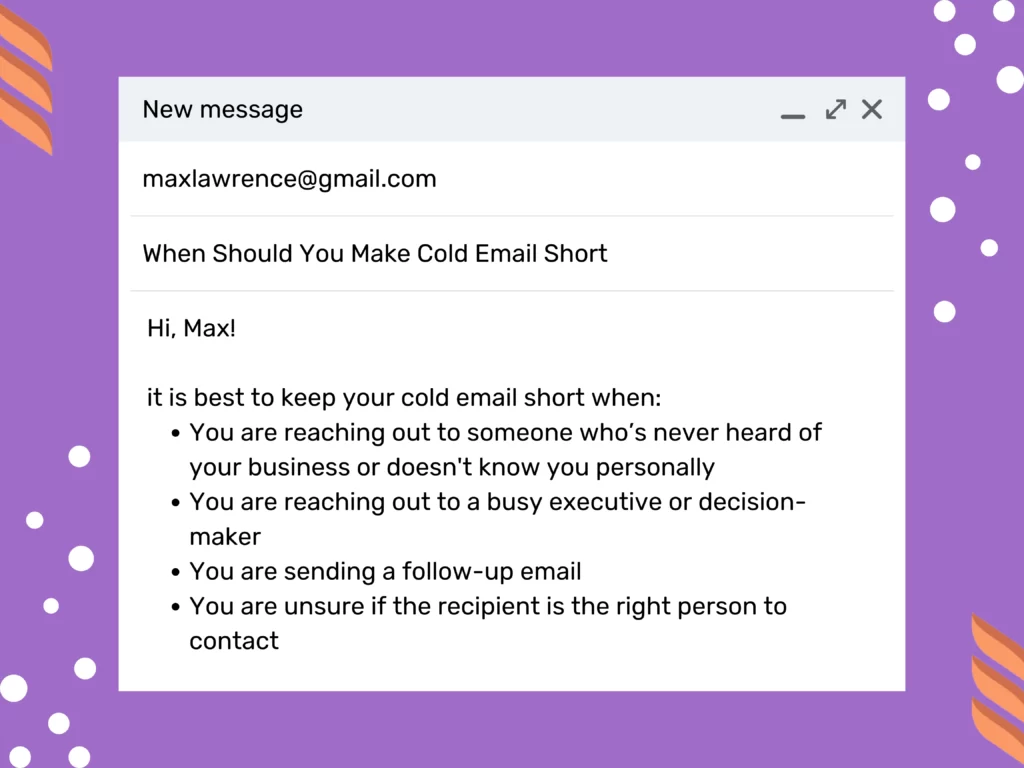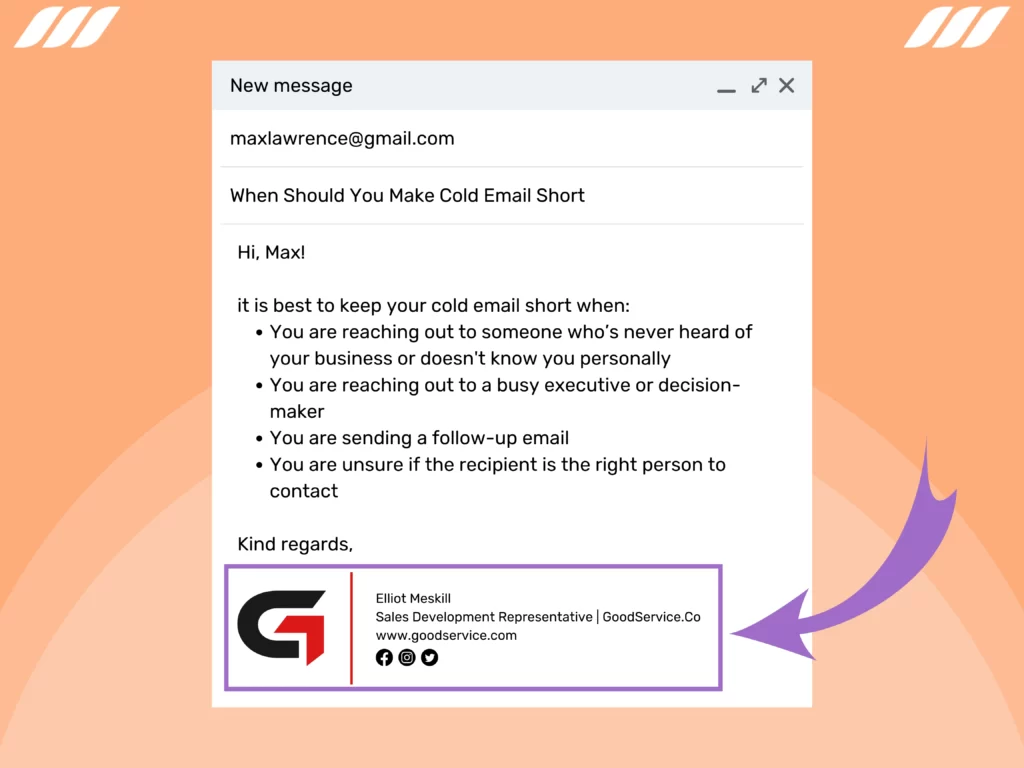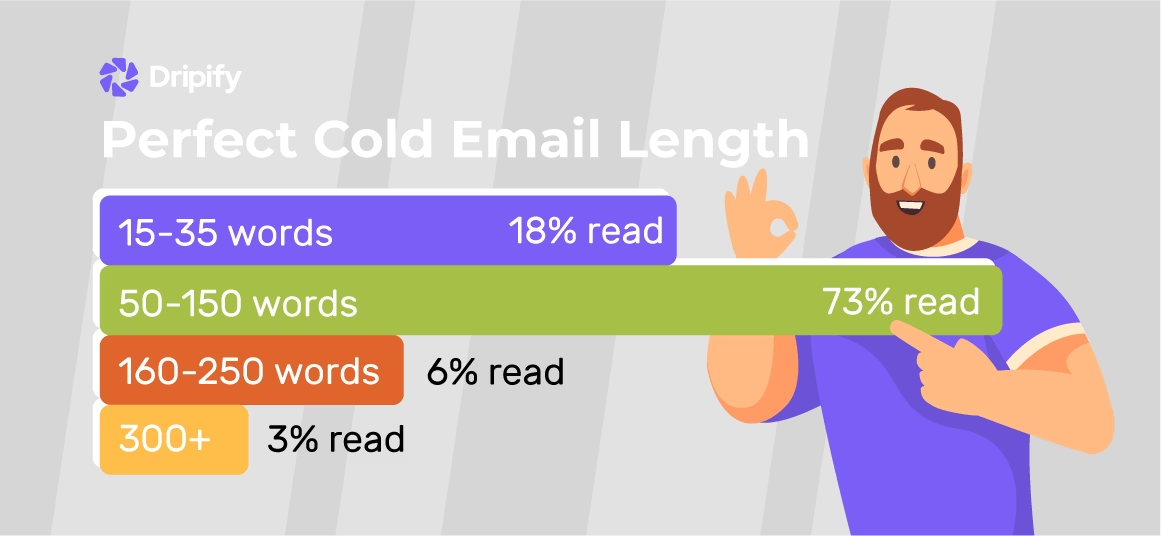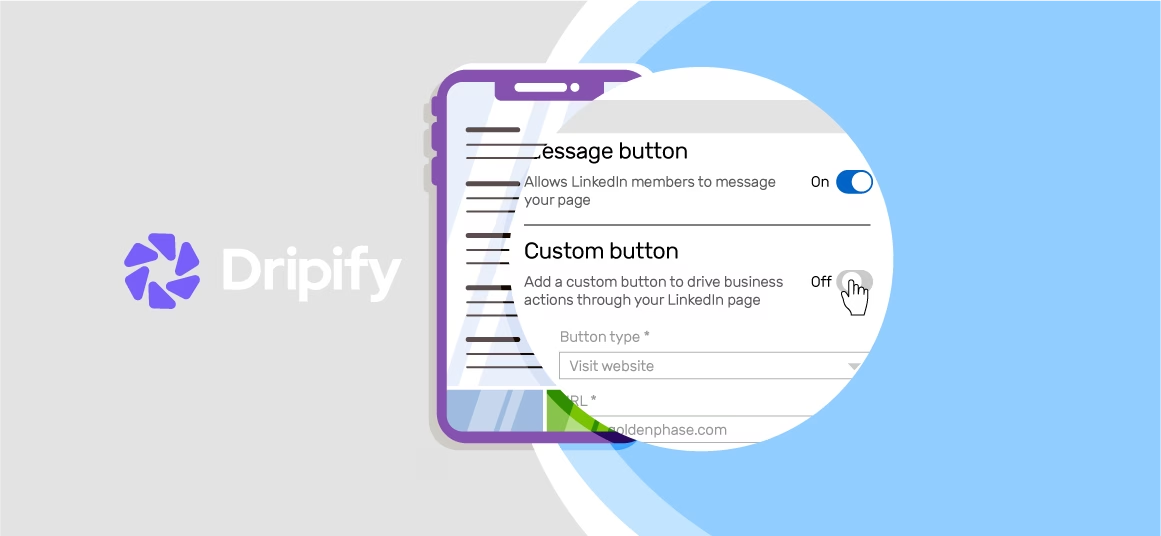Are you struggling to get responses from your cold emails? Are you unsure of how long your emails should be? If so, you’re not alone. Cold emailing can be daunting, but it’s also a valuable tool for growing your business or personal brand.
The length of your cold email can make or break your chances of getting a response. In this article, we’ll answer how long should a cold email be and when to make it shorter or longer. We’ll also provide tips on how to write a great cold email that maintains the ideal length.
- The Ideal Length of a Cold Emailing
- When Should You Make Cold Email Short?
- When Should You Make Cold Email Longer?
- How to Write a Great Cold Email Maintaining the Ideal Length
- 1. Polish the “from” line
- 2. Write an interesting cold email subject line
- 3. Write an attention-grabbing introduction
- 4. Add value
- 5. Don’t forget to include a call-to-action
- 6. Improve your signature
So, let’s dive in and learn how to make your cold emails stand out in a crowded inbox.
The Ideal Length of a Cold Emailing
There’s no hard and fast rule regarding the ideal word count for cold emails. However, most experts suggest that the ideal length of a cold email should be between 50-125 words. This length is long enough to convey your message but not so long that your recipient loses interest halfway through reading it.
Remember that most people receive a large number of emails every day, so it’s essential to make your message concise and to the point. At the same time, you also want to provide enough information to make your email compelling and convince the recipient to take action.
Read also: Best Email Drip Campaign Examples
When Should You Make Cold Email Short?
If you’re reaching out to someone who’s never heard of your business or doesn’t know you personally, it’s best to keep your email on the shorter side. In this case, you want to grab their attention quickly and avoid overwhelming them with too much information.
Keep your email short, focusing on the most critical information that will pique their interest.
A short email that quickly conveys your message can be more effective than a long-winded email that goes into too much detail. Plus, a short email is more likely to be read in its entirety, increasing the chances of getting a response.
Another situation where you should consider shortening your cold email is when you’re reaching out to a busy executive or decision-maker. These individuals receive a large volume of emails daily and simply don’t have the time to read long emails. Keeping your email concise can increase the chances of them reading your entire message and taking action.
Next, it is best to keep your cold email short when sending a follow-up email. If you’ve contacted the recipient once and haven’t received a response, a short and simple follow-up email may be more effective than a longer one.
Finally, if you’re unsure if the recipient is the right person to contact, a short email can be a good way to gauge their interest without wasting too much time. Keep your email brief, introduce yourself and your business, and ask if they want to learn more.
Read also: Best Time to Send Cold Emails
When Should You Make Cold Email Longer?

On the other hand, if you’re reaching out to someone who’s already familiar with your business or has shown an interest in your product or service, you can write a longer email. In this case, you can provide more information about your business, product, or service and how it can benefit the recipient.
The ideal length of a cold email can also vary depending on your industry and target audience.
For example, if you’re contacting a tech startup, they may be more open to receiving longer emails that provide more detail. Including social proof, such as customer testimonials, is also a great idea to add credibility to your pitch.
Another situation in which you may want to make your cold email longer is when you’re sending a sales pitch. In this case, you want to provide enough information to convince the recipient to take action, whether it’s scheduling a call or setting up a demo. A longer email can provide more context and detail, making your pitch more persuasive.
Personalization can be a powerful tool in cold email marketing, especially when you want to make a sales pitch. It often requires more than just a simple introduction and pitch. By taking the time to research the recipient and craft a personalized message, you can build rapport and increase the chances of getting a response.
Finally, if you’re sending a cold email as part of a larger outreach campaign, you may want to make your email longer to stand out from the competition. Suppose the recipient receives multiple emails from other businesses or individuals. In that case, a longer email that provides more detail and context can be more compelling and increase the chances of getting a response.
In any case, the key is to strike the right balance between providing enough information to be compelling and overwhelming the recipient with too much detail. By focusing on the most critical information and tailoring your message to the recipient, you can create a longer cold email that is still effective in getting a response.
Read also: Best Email Marketing Automation Tools
How to Write a Great Cold Email Maintaining the Ideal Length
While some may argue that longer emails are more comprehensive, research suggests that shorter emails tend to be more effective. As such, the right balance between brevity and relevance is essential to write a great cold email that captures the reader’s attention and encourages them to take action.
Let’s explore some practical tips on how to write a great cold email while maintaining the ideal length.
1. Polish the “from” line
Before you start writing your email, make sure to edit the “from” line to include your name and your business name. This will make it easier for the recipient to identify you and increase the chances of your email being opened.
2. Write an interesting cold email subject line
Your cold email subject line is the first thing the recipient will see, so it’s crucial to make it count.
A great subject line should be short, clear, and attention-grabbing. Make sure to use personalization strategies, such as the recipient’s name or company name, to make the subject line more relevant.
3. Write an attention-grabbing introduction
The introduction part of a cold email is an excellent chance to make a good impression. You must know how to start an email by writing an impactful introduction.
Start by addressing the recipient by their name and mentioning something you admire about their work or their company. You can also include a little bit about yourself or your business, but keep it brief.
4. Add value
Your pitch should focus on how your product or service can benefit the recipient. Make sure to highlight the features and benefits of your product or service and explain how it can solve their problem. Even better, consider including a quick statistic or a case study to support your claims.
5. Don’t forget to include a call-to-action
The call to action is a vital part of how to end an email. Your email should end with a clear call to action, such as asking for a meeting, a phone call, or a reply to your email. Make sure to include a deadline or a sense of urgency to encourage the recipient to take action.
6. Improve your signature

Your email signature should include your name, job title, company name, and contact information. It is also good to include a link to your website or social media profiles. Make sure your signature is professional and easy to read.
Read also: Common Cold Emailing Myths
Conclusion
As you see, there’s no one-size-fits-all answer to the question of how long should a cold email be. But the consensus among experts is that shorter emails tend to perform better, with most experts recommending a length of around 50-125 words.
But it’s also essential to prioritize clarity, relevance, and personalization when crafting a cold email. By following the guidelines above and using a solid email personalization strategy, you’ll increase your chances of getting a response. Remember to keep your email short and to the point, but don’t sacrifice important details for the sake of brevity.


![Email Outreach Tracking [Tips, Tricks and Tools]](https://dripify.io/wp-content/uploads/2025/02/11-7-png.avif)
![Create a Prospecting Plan [+8 Prospecting Methods]](https://dripify.io/wp-content/uploads/2025/02/11-png.avif)